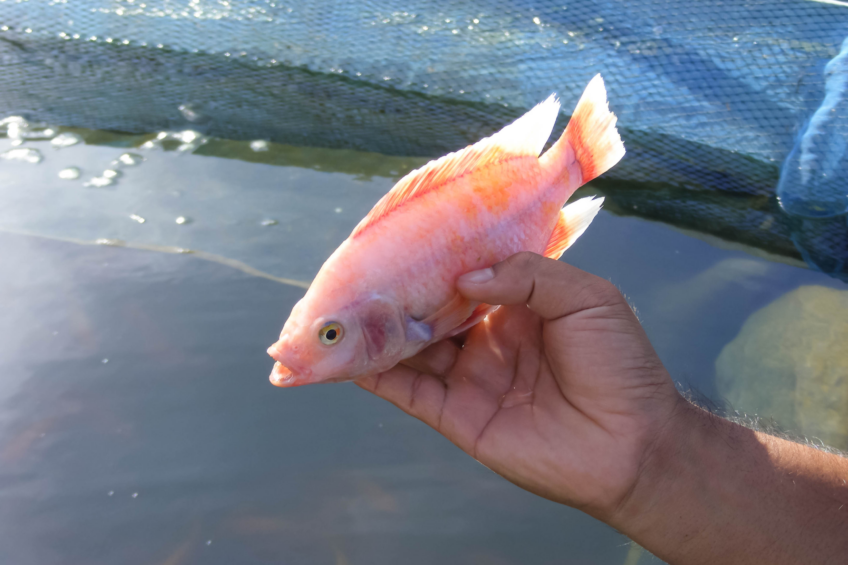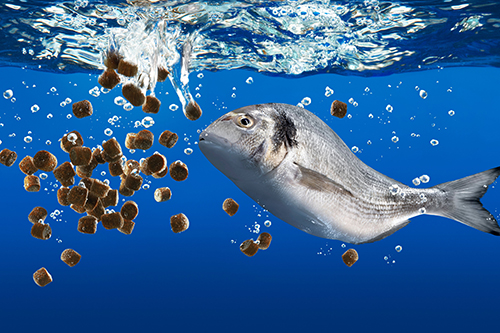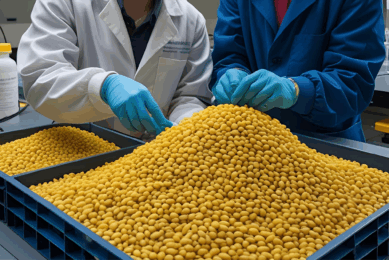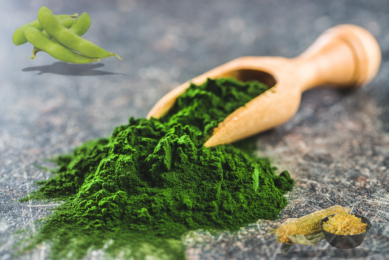Evaluating the search for new protein sources in aquafeeds

A variety of new feed ingredients are emerging in the aquaculture feed sector. In this recent study, researchers evaluated potential protein sources for future expansion of aquaculture worldwide.
In this study, which was published in the journal Reviews in Fisheries Science and Aquaculture, researchers examined the use of different protein sources through a Strength-Weakness-Opportunity-and-Threats (SWOT) analysis. The research was led by IFFO’s Technical Director, Dr Brett Glencross and a cohort of world-renowned fish nutritionists. The protein sources were grouped as follows:
- Marine proteins (produced from either forage fishery or by-products from both fishery and aquaculture resources),
- Processed animal proteins (made from terrestrial animals produced for human consumption from which by-products are generated, including insect and worm meals),
- Single-cell proteins (produced from bacterial, yeast, fungal, or microalgal origins), and,
- Grain proteins (making up the largest volume of all global aquafeeds) such as cereals, oilseeds, and pulses, including those plant resources used either unmodified or with varying degrees of processing.
The SWOT analysis
To further examine each of the different ingredient classes a Strength-Weakness-Opportunity-and-Threats (SWOT) analysis (Figure 1) was applied, to enable some consideration of what future potential may exist across the spectrum and what risks and opportunities it may bring. It is noted that all ingredients have strengths and weaknesses and that there is no such thing as the perfect ingredient. By better appreciating the positives and negatives of each ingredient, it becomes possible to increase adaptability in responding to the various opportunities for their use in aqua feeds.
Figure 1 – Summary of the SWOT analysis of the different protein sources.

Marine proteins
The main strength of marine proteins is their nutritional value; they are rich in protein, with an ideal balance of essential amino acids. They are rich in micronutrients ranging from long-chain n-3 fatty acids, nucleotides, phosphorus and trace elements. Marine proteins contain no antinutritional factors. The researchers found that while the high cost and volatility of fishmeal prices are perceived as a weakness of marine proteins, their price stability exceeds that of many other raw materials.

The main weakness is the public perception that fisheries are unsustainable, with frequent reports and media coverage to this effect. Another weakness is the sector’s limited capacity to increase its volume of production. A great opportunity for the sector is found using the lifecycle assessment (LCA) analysis, which shows that marine ingredients have low environmental impacts on global warming potential (carbon footprint), water and land footprints. The occurrence of illegal, unreported and unregulated fishing is a significant threat to the sustainable supply of fishery resources.
Processed animal proteins (PAPs)
The main strength of PAPs is their widespread availability and as by-products of food production, their price is often relatively low, making them a cost-effective resource. Another strength is their richness in protein and lipids, providing high nutritional value.
The main weaknesses of PAPs include societal acceptance, complex processing and variability in nutritional composition. On the other hand, the most prominent opportunity for the use of PAPs is that meat consumption is growing globally, meaning that as animal production for human food increases, so does the availability of PAPs. On the contrary, the existence of strong legislation in some regions to limit the capacity of the feed sector to use certain PAPs has been a significant threat. Another threat has been the adulteration of PAPs with low-quality products and the energy costs associated with rendering and drying the products.
Single-cell proteins (SCP)
The production of SCPs (in the form of bacteria, microalgae and yeasts) allows the potential use of inorganic sources of nutrients (notably, N and C sources), ensuring that protein production does not compete with potential food production for direct human consumption.
On the weaker side, some SCPs require high energy input during processing; for example, the presence of alginates in microalgae means the cell walls can be resilient, requiring substantial energy input to break them down. The greatest opportunity is the possibility of using genetic modification (GM) technologies to manipulate the production of various protein classes to improve overall protein yields, improve the balance of essential amino acids and even include additional nutrients such as n-3 fatty acids, carotenoids or other bioactive molecules. The major threats to viable SCP production are costs and scalability. The use of capital-intensive fermentation systems allows significant control over the production process for these resources but requires large up-front capital investment.
Grain proteins
Methods for the large-scale production of many varieties of grain products, and the necessary infrastructure and systems are well-established worldwide. Grain products can also be relatively easily processed to add value to improve their nutritional value, while there are no acceptance issues.
The nutritional characteristics of many grain proteins are a significant weakness to their application in aquaculture feeds and this frequently limits their inclusion levels; the main issues are poor palatability and variability in nutritional composition. The use of GM technologies and the possibility to produce co-products from protein, lipid and carbohydrate fractions creates a great opportunity to increase the overall value of the resource.
The greatest threat facing grain protein production is that of climate change. Reviews of the impacts of various climate change scenarios on grain production across the world indicate that this represents a significant and growing challenge. Another threat is that, as the world population continue to grow, there will be increased competition in the use of grains for food-feed-fuel.
No perfect protein source
Dr Glencross concluded by mentioning that there is no perfect protein source: “The assessment demonstrates that every ingredient has strengths and weaknesses. In many cases, the weaknesses of one ingredient can be matched with the strengths of other ingredients to identify opportunities for complementarity”. He further said, “By better appreciating the positives and negatives of each ingredient, it becomes possible to increase our adaptability in responding to the various opportunities for their use in feeds and improve the sustainability of the sector moving forward.”
The study provided three main options to improve aquafeed security:
- Improve management of existing resources to increase their productivity. Existing resources need to be used more efficiently, and above all, new resources are needed.
- Irrespective of the resources we produce, ensure we do not waste anything.
- Further develop non-competing resource production.











